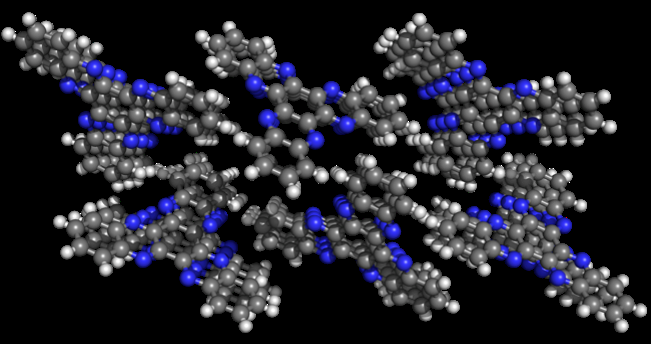Researchers develop advanced material for ultra-stable, high capacity rechargeable batteries

A team of researchers from the National University of Singapore (NUS) has successfully designed a novel organic material of superior electrical conductivity and energy retention capability for use in battery applications. This invention paves the way for the development of ultra-stable, high capacity and environmental friendly rechargeable batteries.
The study led by Professor Loh Kian Ping from the Department of Chemistry at NUS Faculty of Science was published in prestigious scientific journal Nature Energy on 8 May 2017.
Challenges of rechargeable batteries
Rechargeable batteries are the key energy storage component in many large-scale battery systems such as electric vehicles and smart renewable energy grids. With the growing demand of these battery systems, researchers are turning to more sustainable, environmentally friendly methods of producing them. One such method is to use organic materials as an electrode in the rechargeable battery.
Organic electrodes leave lower environment footprints during production and disposal which offers a more eco-friendly alternative to inorganic metal oxide electrodes commonly used in rechargeable batteries. The structures of organic electrodes can also be engineered to support high energy storage capabilities. The challenge, however, is the poor electrical conductivity and stability of organic compounds when used in batteries. Organic materials currently used as electrodes in rechargeable batteries—such as conductive polymers and organosulfur compounds—also face rapid loss in energy after multiple charges.
To overcome these limitations, Prof Loh and his research team synthesised a novel organic compound 3Q (π-conjugated quinoxaline-based heteroaromatic molecule) that has up to six charge storage sites per molecule in an effort to enhance its conductivity and energy retention.
When hybridised with graphene and used in an ether-based electrolyte, the team observed that the 3Q-based electrode displayed a high electrical conductivity of 395 milliampere hour per gram. It also exhibited a strong energy retention capability after multiple cycles of charge and discharge.
Prof Loh explained, "Our study provides evidence that 3Q, and organic molecules of similar structures, in combination with graphene, are promising candidates for the development of eco-friendly, high capacity rechargeable batteries with long life cycles."
More information: Chengxin Peng et al. Reversible multi-electron redox chemistry of π-conjugated N-containing heteroaromatic molecule-based organic cathodes, Nature Energy (2017). DOI: 10.1038/nenergy.2017.74
Journal information: Nature Energy
Provided by National University of Singapore





















